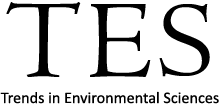Principles of Transparency and Best Practice
Name of the Journal: The unique title of the journal 'Trends in Environmental Sciences' distinguishes it from other journals, making it easy for authors, reviewers, editors, and the global audience to identify and recognize it.
Website: The website of Trends in Environmental Sciences is managed using the comprehensive services of SciOne . This system offers a complete range of services, including manuscript submission, peer review, content hosting, analytics, and identity management. We have made every effort to ensure that our website is free of misleading content that could potentially deceive authors, readers, and editors. Additionally, we strictly prohibit any attempt to imitate the website of another journal or publisher.
Publishing Schedule: Trends in Environmental Sciences is an online-first journal that is committed to providing the latest research findings as soon as possible. Our journal publishes one volume per year, ensuring that readers have access to the newest developments in their field. We strive to maintain transparency and accuracy in all aspects of our publication process to promote trust and confidence in the research community.
Archiving: The published content of Trends in Environmental Sciences will be securely stored and protected by the Asian Digital Library in the event of the journal's discontinuation. This ensures that all archived material will remain accessible through the Asian Digital Library and preserved for future reference.
Copyright & Licensing: Trends in Environmental Sciences is an Open-Access journal that ensures complete transparency regarding copyright and licensing information, which can be found on its website. All articles published, whether in web or PDF format, contain relevant licensing details for the convenience of the readers.
Peer Review Process: To ensure the highest level of quality, all submitted content, excluding editorial materials, undergoes a rigorous peer-review process at Trends in Environmental Sciences. This process is well-defined and strictly adhered to, and is publicly accessible on the journal's website under the heading of "Peer Review Process and Policy." The review process is carried out in a transparent and accountable manner, ensuring the credibility and reliability of the content published in Trends in Environmental Sciences.
Access: The online version of Trends in Environmental Sciences is accessible to readers without any charge, whereas the print edition is exclusively available to subscribers only.
Ownership and Management: Trends in Environmental Sciences is owned by the ACE College for Women, Pakistan and maintained by independant and highly experienced and recognized experts Editorial Board Members. The journal's editorial page provides detailed information about the editorial team, including full names, affiliations, and any relevant digital identifiers.
Advisory Board: The Editorial Board also serves as the journal's Advisory Board. Composed of highly recognized and experienced experts in their respective fields, the Board is responsible for advising and guiding the journal's policies and procedures, including the peer review process, editorial decisions, and strategic planning. The journal's editorial page provides detailed information about the team, including full names, affiliations, and relevant digital identifiers. Members are selected based on their expertise, reputation, and adherence to ethical standards. They are appointed by the Editor-in-Chief and serve a term of three years, which may be renewed upon mutual agreement.
Editorial Team and Contact Information: The website of Trends in Environmental Sciences features an editorial board page that provides a list of all editorial board members along with their complete names and affiliations. Additionally, the journal offers comprehensive contact information for its editorial office, including a complete mailing address, on the website.
Author Fees: Trends in Environmental Sciences operates with the generous financial support of ACE College for Women, which covers all day-to-day operations of the journal. As a result, authors are not charged any fees to publish their articles as open access.
Other Revenue Sources: Trends in Environmental Sciences has declared the following additional revenue sources:
- Advertising: Occasionally, Trends in Environmental Sciences may publish paid job offers or announcements regarding conferences to generate revenue.
- Reprints: Trends in Environmental Sciences offers a paid reprint service to authors and organizations who wish to distribute their published articles. This service generates revenue that helps cover the day-to-day expenses of the journal.
- Print Subscription: The print subscription service is one of the revenue streams offered by Trends in Environmental Sciences to meet its financial requirements. We provide a high-quality print version of the journal to our subscribers at a reasonable cost.
Direct marketing: At Trends in Environmental Sciences, we send personalized emails to our registered members based on their interests. We ensure that these invitations are limited to a maximum of 30 per day and provide a straightforward opt-out option through their profile page. We never engage in sending unsolicited emails or spam.
Direct Marketing: Trends in Environmental Sciences uses the following methods to market the journal, disseminate information, and send calls for papers:
- Direct Emails: We send personalized emails to our registered members based on their interests. We ensure these invitations are limited to a maximum of 30 per day and provide a straightforward opt-out option through their profile page. We never engage in sending unsolicited emails or spam.
- Social Media: We use platforms like Facebook, LinkedIn, and Twitter to disseminate information about the journal and invite researchers worldwide to contribute to Trends in Environmental Sciences as authors, reviewers, and editors.


